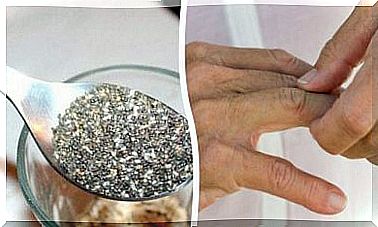What Are The Sentinel Lymph Nodes?

Oncological disorders often lead to overuse of various procedures when treating patients. Biopsy of the sentinel lymph nodes saves some steps and avoids surgeries that would be unnecessary.
The sentinel lymph nodes are the first lymph nodes to which cancer cells go when they differentiate from the primary tumor. It is not a metastasis in the broad sense of the word, but the mechanism is reminiscent. From localized cancer in an organ, malignant cells move to other areas and some reach a nearby lymph node.
With breast cancer, the sentinel lymph nodes are the key when establishing the stage, which is when assessing how much the tumor has spread in the body. Through a biopsy of the sentinel lymph nodes, doctors can predict the development of the disorder in the person.
In addition, data on the sentinel lymph nodes help to plan treatment after the biopsy. Based on the categorized extent of cancer, physicians can decide whether to use mere surgery, chemotherapy and radiation therapy, or any other combination.
The development thanks to the sentinel lymph nodes
Biopsy of the sentinel lymph nodes was an important development in oncology. Just think that before this technique, a woman with breast cancer used to undergo major surgeries in which parts of chains of lymph nodes were removed from the armpit close to the primary tumor.
It is not a small operation and one of the most common side effects is lymphedema, which consists of obstructions in the circulation of the lymphatic system. In this case, the fluid seeps into the soft tissues due to lack of circulation, making the upper limbs inflamed.
Removal of entire lymph chains had two purposes: to diagnose how widespread the cancer was, and to treat any metastasis that was already there. The problem with this technique was that if the result of the subsequent biopsy was negative, then the whole procedure would have been in vain and the woman would then have to suffer the side effects.
The idea of reducing the size of the surgery is to improve the patients’ quality of life. Surgery will still be needed, but the incision is smaller and the surgeon will only remove the nodule if the biopsy reports the presence of malignant cells.

Biopsy of the sentinel lymph nodes
The procedure for biopsy of the sentinel lymph nodes is part of the protocol for specific cases of breast cancer. Melanomas have been experimented with, but there is still discussion about how useful it is.
As we mentioned above, this biopsy takes a sample from the first node that the primary tumor would drain in order to locate the malignant cells. If results are negative, then we can be sure that the tumor is localized and is inside the organ.
This involves a smaller incision than is necessary for larger lymph node removal surgeries, but it can still have some side effects. The most common are subsequent bleeding from the wound and infection. However, the risk is very low.
How do they know which are the sentinel lymph nodes?

To perform the biopsy, doctors must first identify the sentinel lymph nodes. To do this, healthcare professionals use techniques that make these nodules visible in relation to the others. That way, the surgeon is able to find the correct location for the procedure.
One way to mark the sentinel lymph nodes is with radioactivity. First, a solution with radiation effect is injected in the area close to the primary tumor. This solution will penetrate the lymphatic system and radioactivate the first node in the chain.
Another technique is the use of blue color. Instead of a radioactive substance, the injection carries a blue color, which takes on the same journey by passing from the area of the primary tumor to the first node nearby.
The choice of the best method depends on the team treating the disorder. Both are effective in locating the sentinel lymph nodes and the side effects are minimal. The radioactive substance is weak and does not cause problems with internal radiation in the cells. On the other hand, the blue color can create a bluish discoloration in the urine for a while.
What do the results of the biopsy mean?
There are two ways to proceed after a biopsy of the sentinel lymph nodes. If the result is negative, it means that they did not detect any malignant cells, so no further surgery is needed. Physicians will assess the patient’s situation and begin appropriate treatment.
In case of a positive result, another operation should be performed. This means that cancer cells have been detected in the surrounding nodules and the tumor has spread.
As we always warn, early detection is very important in oncology. The earlier the procedure takes place, the faster the results will be available and the better the prognosis.









